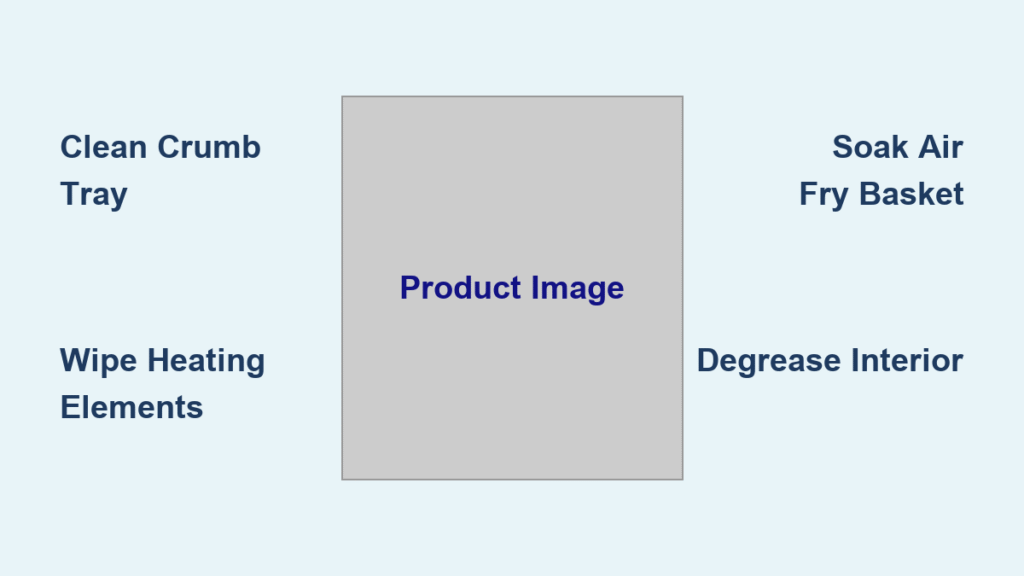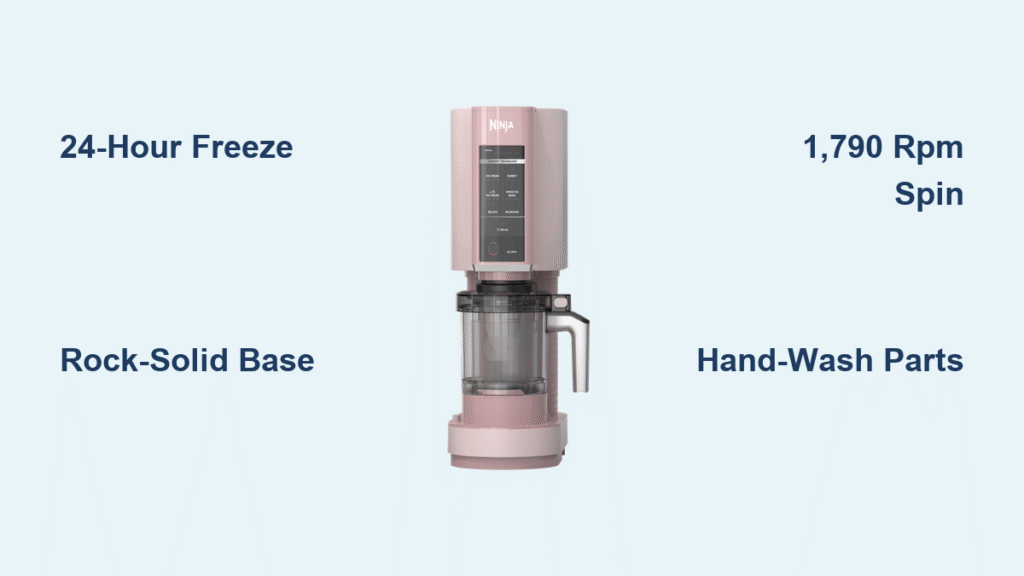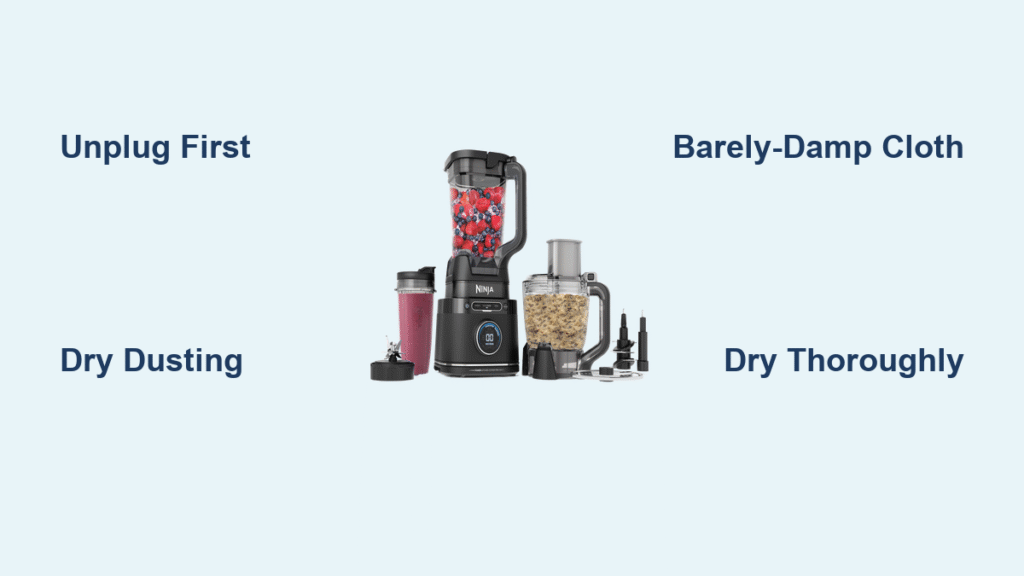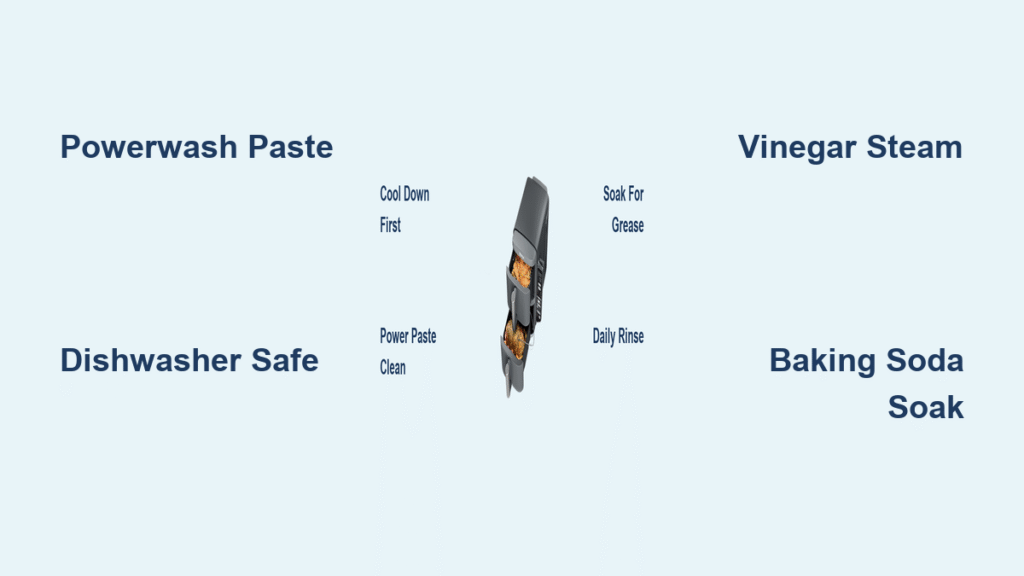Your Ninja 12-in-1 Air Fryer Oven works hard creating crispy fries, golden rotisserie chicken, and perfect dehydrated snacks. But without proper cleaning, grease buildup and food residue sabotage performance and create unpleasant odors. When grease hardens on heating elements or crumbs accumulate in hidden corners, your appliance struggles to circulate hot air efficiently. This comprehensive guide delivers specific, step-by-step cleaning methods for your DT201 or DT251 model—no more guessing whether that sticky residue requires baking soda or vinegar. You’ll learn exactly how to clean your Ninja 12 in 1 safely while extending its lifespan and keeping meals tasting fresh.
Ignoring regular maintenance leads to smoke during cooking, uneven results, and even fire hazards from accumulated grease. Most owners don’t realize how quickly debris builds up in crevices like the crumb tray channel or around heating elements. By following these targeted techniques, you’ll prevent permanent staining and maintain that “like new” performance for years. Let’s transform your grimy air fryer oven into a spotless cooking powerhouse with methods proven safe for all Ninja 12-in-1 components.
Essential Safety Steps Before Cleaning Your Air Fryer Oven
Always unplug the unit and wait 30 minutes—heating elements retain dangerous heat long after cooking stops. Skipping this step risks severe burns when handling accessories or interior surfaces. Never submerge the main housing, power cord, or control panel in water; electrical components require dry cleaning only. Using abrasive pads or steel wool will permanently scratch non-stick coatings and stainless steel finishes, so stick to soft microfiber cloths and non-scratch sponges.
Critical Mistakes That Damage Your Appliance
Spraying cleaners directly onto the control panel invites liquid seepage into electronics. Instead, dampen your cloth first—this prevents display malfunctions and costly repairs. Never use oven cleaners or bleach-based solutions; they corrode metal components and leave toxic residues. For stainless steel exteriors, avoid ammonia-based polishes that cause permanent discoloration over time. Always verify accessories are cool to the touch before washing; thermal shock from cold water on hot metal warps racks and trays.
Daily 5-Minute Cleaning Routine for Peak Performance
Stainless Steel Exterior That Stays Smudge-Free
Wipe fingerprints and grease splatters immediately after cooking with a soft cloth dampened in warm, soapy water. For stubborn spots like dried sauce splatters, make a paste with baking soda and water—this gentle abrasive lifts residue without scratching. Pro tip: Dry with a lint-free towel using circular motions to prevent water spots that dull the finish. Never spray liquids near control panel seams; apply cleaner to your cloth first to protect electronics.
Interior Cavity Cleaning That Prevents Smoke
Remove the crumb tray and all accessories while still warm (not hot) to prevent grease hardening. Wipe interior walls immediately with a damp microfiber cloth and mild dish soap, focusing on corners where crumbs accumulate. For light residue, this takes under 2 minutes and stops baked-on messes from forming. When dealing with sticky drips, apply a baking soda-water paste and let it sit while you clean accessories—this loosens debris for effortless removal.
Deep Clean Removable Accessories Without Damage

Air Fry Basket Cleaning That Preserves Non-Stick Coating
Soak the basket in hot, degreasing dish soap for 10 minutes to loosen stuck food particles—never use metal scrubbers that chip the coating. Use a soft-bristled brush to clean mesh openings, working from the inside out. Critical check: Inspect for coating damage; flaking surfaces require immediate replacement to prevent contamination. Rinse thoroughly until water runs clear, then air-dry completely before storage.
Crumb Tray and Sheet Pan Cleaning That Eliminates Smoke
Remove these components while warm (not scorching hot) to prevent grease from fossilizing. Soak in hot, soapy water for 15 minutes, then use a plastic scraper on baked-on residue—metal tools scratch surfaces. Pay special attention to tray edges where grease hides; neglected buildup causes smoke during next use. For stubborn spots, apply baking soda paste and let it sit 20 minutes before gentle scrubbing.
Monthly Deep Clean That Restores Like-New Performance
Complete Interior Cavity Deep Clean Process
Set aside 45 minutes for this critical monthly task. Mix 2 tablespoons baking soda with 1 quart warm water and apply to all interior surfaces with a soft cloth. Let it sit for 15 minutes to break down grease, then wipe with a damp cloth. Heating element warning: Wipe elements gently with a barely damp cloth—never spray liquid directly on them. Ensure all surfaces dry completely before reassembly to prevent electrical issues.
Glass Door Cleaning That Prevents Streaking
Clean both interior and exterior glass with a 1:1 vinegar-water solution using a microfiber cloth. Wipe in circular motions, then buff dry immediately to avoid streaks. Critical detail: Clean door seals thoroughly—grease here prevents proper closure and reduces efficiency. Check for cracks; any damage requires immediate door replacement for safety.
Solve Specific Cleaning Challenges Fast
Remove Heavy Grease Buildup in 30 Minutes

For neglected grease, apply undiluted degreasing dish soap directly to affected areas and let sit 30 minutes. Gently scrub textured surfaces with a soft brush, working in small sections. Key step: Rinse accessories multiple times—residual cleaner causes smoke during cooking. Never use commercial oven cleaners; they damage Ninja’s specialized coatings.
Eliminate Burnt Food Residue Without Scrubbing
Create a thick baking soda-water paste (2:1 ratio) and apply generously to burnt spots. Let it sit for 60 minutes—this breaks down carbonized food naturally. Lift residue with a plastic scraper using minimal pressure. Repeat for extreme cases; patience prevents surface damage from aggressive tools.
Banish Lingering Odors After Fish or Fried Foods
Two proven methods: First, run the empty unit at 400°F for 15 minutes to burn off residue. Second, place lemon slices on the crumb tray and heat at 250°F for 10 minutes. Always leave the door open afterward for 30 minutes to air out completely. Never use chemical air fresheners—they leave toxic residues on cooking surfaces.
Rotisserie and Dehydrator Component Care

Spit Rod and Fork Cleaning That Ensures Safe Rotation
Hand-wash the spit rod after each use with warm, soapy water—built-up grease causes slippage during cooking. Remove rotisserie forks and clean prongs thoroughly, checking for bends that cause uneven rotation. Dry all components completely before storage to prevent rust; moisture accelerates metal corrosion.
Dehydrator Rack Cleaning That Prevents Mold
Clean each stackable rack individually—narrow spaces trap food particles that cause mold. Use a bottle brush for tight corners between wires. Critical step: Air-dry racks upright for 24 hours before storage; trapped moisture between stacked racks breeds mildew. Never store damp racks inside the main unit.
Create Your Maintenance Schedule for Longevity
Daily (2-3 Minutes)
- Empty and rinse crumb tray immediately after cooking
- Wipe interior walls with damp cloth
- Clean used accessories while warm
- Check door seal for debris
Weekly (20 Minutes)
- Deep clean all accessories with baking soda soak
- Clean interior and exterior glass
- Inspect heating elements for debris
- Polish stainless steel exterior
Monthly (45 Minutes)
- Complete disassembly and deep clean
- Check accessories for warping or coating damage
- Inspect power cord for cracks
- Clean ventilation slots with soft brush
Fix Common Cleaning Mistakes Immediately
Clear Cloudy Glass Door in 5 Minutes
Mix equal parts vinegar and water in a spray bottle. Mist onto microfiber cloth (never directly on glass), then wipe in circular motions. Buff dry with a second clean cloth—ammonia-based cleaners permanently etch glass over time. For stubborn film, repeat with undiluted white vinegar.
Stop Smoke During Cooking Now
Focus on three areas: First, clean the crumb tray channel where grease hides. Second, wipe heating elements with damp cloth. Third, check air vents for blockages. Even small grease amounts smoke when reheated—this isn’t normal and requires immediate attention.
When to Replace Components (Not Just Clean)
Replace immediately if you spot non-stick coating chips (food sticks aggressively), warped racks (causes uneven cooking), or glass door cracks (safety hazard). Excessive smoke after thorough cleaning indicates internal damage needing professional service. Always use genuine Ninja parts—counterfeit accessories warp at high temperatures and void warranties. Contact Ninja support with your model number (DT201 or DT251) for exact replacement parts.
Key Takeaway: Consistent 5-minute daily wipes prevent 45-minute deep cleans. Your Ninja 12 in 1 rewards proper care with reliable performance and restaurant-quality results. By targeting specific trouble spots like crumb tray channels and heating elements, you’ll avoid smoke, odors, and premature wear—keeping your air fryer oven running like new for years. Start today: empty that crumb tray and wipe down the interior while it’s still warm!





